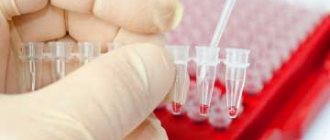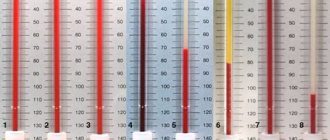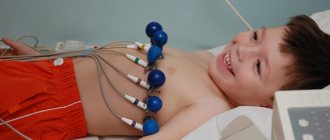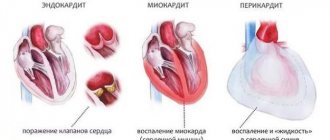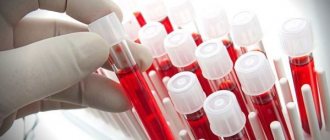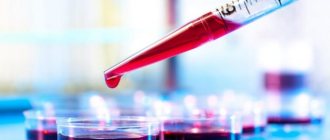Age norms of red blood cells in women's blood tests
Women pay more attention to their health than men.
Having received the result of the analysis, they immediately begin to study it, hoping to glean useful information about the state of their body. The norm of red blood cells in the blood of women is a value that reflects the total number of blood cells for a healthy body. The number of red blood cells in the blood can be used to judge a person’s performance and well-being. All cells within the body are important for its functioning. They perform their functions, interact with other cells and are part of a single system of the body. Erythrocytes, or red blood cells, in adults are formed in the bone marrow of the spine and skull. Having fulfilled their basic functions, the cells are destroyed. Also, after physical injury, red blood cells are destroyed. This can be visually seen by the appearance of bruises at the site of the impact.
Functions of red blood cells in the body:
- Oxygen transport or respiratory function is considered the main task of red blood cells. Moving through the circulatory system, cells deliver the necessary oxygen from the lungs to other organs and tissues. Carbon dioxide is transported back.
- Red blood cells act as adsorbents and protect the body from the effects of toxic substances.
- Participation in immune and autoimmune processes helps improve overall immunity.
- During the circulation process, blood reaches all internal organs and tissues of a person. Red blood cells ensure the movement of nutritional amino acids to other cells.
- Enzymes attach to the surface of red blood cells and the cells take part in enzyme metabolism.
- Red blood cells regulate acid-base balance.
The life cycle of cells is about 125 days. Cells of a changed shape are destroyed faster. To replace dead red blood cells, the body produces new ones. Thus, a certain balance is maintained in the content of the total number of red blood cells in the body.
Quantitative and qualitative indicators of blood cells will help determine a general clinical blood test. The sample is provided as part of a routine medical examination or as prescribed by a doctor.
A blood test is performed on an empty stomach in a laboratory setting.
The red blood cell level is measured in million/L and may be referred to as RBC. The percentage of blood cells in the blood (hematocrit) is usually 36–42%, and this value may also be indicated on the laboratory test form.
In the blood, the norm of these cells varies depending on the age category of women:
- From the age of 12-13, girls begin puberty, the body is rebuilt and the number of red blood cells in the blood changes. There is a slight decrease in these cells due to the onset of menstruation, and test results may fluctuate. The norm is 3.8–4.9 × 10 12 / l.
- For adult women of childbearing age, the test result depends on the menstrual cycle. If the sample is taken at the beginning of menstruation, there may be a slight excess of the norm due to the fact that the bone marrow is actively producing red blood cells at this time. During ovulation, the number of red blood cells decreases. The normal level is in the range of 3.5–4.7 × 10 12 /l.
- After approximately 45 years, the female body begins to prepare for menopause. The normal content of erythrocytes in women also changes: 3.6–5.1 × 10 12 / l.
- In the blood of women after 50 years of age, a condition is reflected that doctors call a decline in activity. This is due to the onset of menopause, the body is being rebuilt. However, despite hormonal changes, the RBC level should not change and remains within the range of 3.6–5.1 × 10 12 /l.
- After 60 years, in the absence of serious diseases and pathologies, the number of red blood cells in the blood is 3.5–5.2 × 10 12 / l.
For pregnant women, there are separate standards for the content of blood cells. Which norm corresponds to the patient depends not on age, but on the trimester of pregnancy. A blood test in the 1st trimester should show 4.2–5.5 × 10 12 / l. In the second, the level of red blood cells decreases to 3.9–4.8 × 10 12 / l. As the time of birth approaches, the body begins to intensify the production of blood cells and their content can reach 4.1–5 × 10 12 /l. The weakening of the female body during childbirth reduces red blood cells to 3–3.5 × 10 12 / l. Over time, balance is restored.
As a rule, the permissible norm for the blood parameters being studied is indicated next to the patient’s indicators. Women can determine deviations from the norm using this analysis result themselves, but only a qualified doctor can understand why the indicators are elevated. There are a number of reasons that cause an increased level of red blood cells (erythrocytosis).
- Lack of oxygen caused by heart or vascular disease leads to increased production of red blood cells by the bone marrow. As a result, high levels of red blood cells occur.
- Low oxygen content in mountains or populated areas with polluted air.
- Oxygen deficiency due to blockage of the renal artery.
- The production of red blood cells of an altered shape entails a decrease in their functionality. Deformed cells cannot fully provide oxygen exchange in the body. In this case, the body compensates for quality with the number of cells.
- Severe stress and anxiety.
When red blood cells are elevated, a woman feels it physically. Constant fatigue, shortness of breath after active activities, and frequent headaches appear. Sometimes there is a change in the skin to a “bluish” color. Several years after the onset of the disease, erythrocytosis is accompanied by increased blood pressure and abnormalities in urine analysis.
Red blood cells and the norm in women in terms of their total number also depend on non-medical factors (phase of the menstrual cycle, use of hormonal contraceptives, etc.). Under the influence of severe stress or heavy physical work, the total cell content in the blood fluctuates. Heavy sweating or lack of fluid also affects the composition of the blood. When considering the result of the analysis, you should take into account all conditions that could increase or decrease the indicator.
In some cases, a blood test may show that your red blood cell count is too low. This condition is called erythropenia. Red blood cell deficiency can occur for various reasons. To maintain health, it is necessary to make a diagnosis and prescribe treatment as quickly as possible.
- Bleeding (internal or external)
- Bone marrow damage affecting red blood cell production
- Condition after surgery
- Heavy periods
- B vitamin deficiency
- Lack of iron in pregnant women
- Heavy metal poisoning
- Malnutrition
Every girl over 18 years of age must undergo a medical examination and donate blood to determine the number of red blood cells at least once a year, and after 40 years - every 6 months. If there is a possible risk of developing hereditary or exacerbation of chronic diseases, the blood is tested 2-3 times a year or more often on the recommendation of a doctor. Women's health requires constant attention; in case of any ailments or deterioration in health, you should consult a doctor.
Source: krov.expert
How are red blood cells different from reticulocytes?
The blood is constantly renewed. And if suddenly disturbances occur in the process of renewal of blood cells, a person can become seriously ill. Red blood cells are born inside the bone marrow. The process of creation and development of these cells is called erythropoiesis. And the process of renewal of all blood is hematopoiesis. The production of reticulocytes is stimulated by the hormone erythropoietin (kidney hormone).
If the body suddenly loses blood reserves or lacks air, the bone marrow receives a command to urgently produce new red blood cells. These young cells are still completely “empty”, and within 2 hours their task is to fill with hemoglobin.
Only then can these cells be called red blood cells. And very young cells are called reticulocytes. Their level is also checked during the general analysis. Disturbances in the process of formation of reticulocytes also lead to disruption of the normal level of red blood cells.
This is how important red blood cells are for us (the norm for men by age). A table describing age norms will be given below.
A significant lack of red blood cells due to any problems indirectly indicates the onset of severe anemia or even blood cancer. Sometimes anemia begins due to the fact that the spinal cord produces little new cells. Anemia can be mild, moderate or severe. Severe anemia occurs when HGB is 70 g/L. But to determine cancer, you need to take many other, more accurate and complex tests.
Red blood cells, normal for women by age
Red blood cells are blood cells that are produced by red bone marrow. The functions of red blood cells include: transporting oxygen from the lungs to the organs, transporting carbon dioxide to the respiratory organs. Participate in water-salt metabolism.
When their number decreases, anemia and hypoxia (decreased oxygen) are observed. An overestimation of the indicator indicates a thickening of the erythroid series. The patient's health is deteriorating. The diagnosis cannot be made based on symptoms; an OAC is required.
UAC indicators depend on the patient’s age and the presence of menstruation. In women before menopause, the erythroid level decreases during menstruation. The rate of red blood cells in the blood of women after 50 years of age increases due to menopause.
To diagnose blood parameters, a general analysis is used. It is taken upon admission to a medical or educational institution and if the presence of a disease is suspected. UAC determines the quantity:
Blood for OAC is taken from a vein or capillary of a finger. An analysis taken from a vein is considered more accurate. Indications for the test:
- suspicion of anemia (formed when the level of red blood cells in the blood decreases);
- planned analysis before and after surgery;
- determining the effectiveness of treatment;
- suspicion of the presence of a disease (acquired, hereditary);
- determination of blood group.
To pass any test correctly, you need to properly prepare for it. A change in diet or excessive exercise will affect the result of the study, distorting the value of blood parameters. Rules to apply before taking the test:
- The test is taken in the morning on an empty stomach. You are allowed to drink a glass of water.
- The day before the test, do not eat fatty, fried, salty or spicy foods.
- The patient should avoid emotional stress and heavy physical exertion.
- Women should not be tested during menstruation.
Additional tests if abnormal
Based on the results of counting the number of red blood cells in the blood of women, the doctor can make a primary conclusion. Reliable clarification of the causes and origin of the pathological process is carried out with the help of additional studies, which include:
- Determination of erythrocyte sedimentation rate, counting the number of other blood cells (leukocytes, platelets).
- Study of the morphological properties of red blood cells (size, shape).
- Determination of hemoglobin concentration per unit volume of blood, as well as its average content in 1 red blood cell.
- Counting pathologically altered red blood cells and determining their percentage.
- Biochemical blood test to determine the concentration of various organic compounds, as well as enzyme activity.
- Microscopic examination of the cellular state of red bone marrow taken by puncture biopsy.
Normal red blood cell counts in women
Normal erythroid cell counts vary depending on age and pregnancy. Over the years, the indicator changes, this is indirectly due to changes in hormonal levels, the function of the pulmonary system, and the degree of development of the red bone marrow.
Table of red blood cells by age of women.
The normal erythroid levels for boys and girls under 13 are the same. After puberty, the numbers change due to changes in hormonal levels.
The second peak of change is the onset of menopause. The uterus stops rejecting the mucous layer, and blood loss does not occur.
During pregnancy, all quantitative blood parameters change. The direction of the erythroid series is redistributed among the organs, their main task is to saturate the placenta with oxygen. There are different options for the deviation of red blood cells in the analysis during pregnancy.
- Decline. Red cells contain hemoglobin, and when they decrease, the child’s oxygen supply decreases. During pregnancy, OAC is administered systematically to correct hemoglobin levels with food (meat, pomegranate) and medications (iron supplements). The lifespan of red cells is 120 days, so the tablets are taken systemically, otherwise the indicator will not change.
- An increase in the number of red blood cells above normal does not indicate an improvement in the body’s conditions, but a thickening of the blood. Because of this, cells take longer to travel through the vessels. Possible embolism of the placenta or lungs, heart attack, stroke. Treatment is carried out through IVs with saline solution, which are carried out in courses.
Normal values of red cells in the blood during pregnancy are 3.7-5.5 10*12/l.
Together with red blood cells, they look at the hematocrit value (the ratio of red cells to the volume of vascular fluid); if it is more than 45% percent, the woman is hospitalized to maintain the pregnancy.
A normal pregnancy may be accompanied by minor changes in UBC parameters. Otherwise, treatment is carried out to correct the indicators.
Reasons for obtaining inaccurate results
Errors in conducting the study can occur during preparation for the test, incorrect collection of material, or incorrect conduct of the study.
- If you consume prohibited foods or use excessive physical force, the results will be incorrect. If a woman takes a test during her period, the number of erythroid cells will be lower than on other days. Eating food right before the test will make it inaccurate.
- Errors in collecting material: applying a tourniquet for more than 2 minutes (the hemoglobin indicator will be overestimated), working with a fist (for accurate indicators this cannot be done), taking an analysis from the vein through which drugs are administered (overestimation of hemoglobin, blood thickening).
- A sharp change in body position (from “lying” to “sitting”). The amount of fluid in the vessels changes, hemoglobin increases.
- An error in passing the test occurs when the material is placed in a contaminated test tube, when the time between passing the test and its analysis increases, or when the biomaterial is collected incorrectly.
- The conduct of the study depends on the clinical laboratory diagnostics physician. The wrong method will show erroneous results.
- If a person quits smoking, this affects hemoglobin and platelets. The patient must talk about this, otherwise the interpretation of the results will be changed.
In different races of the same sex, the indicators of the erythroid series differ. The attending physician should take this into account.
Increased red blood cell counts
An increase in red cells (erythrocytosis) affects the general condition of the patient. At the beginning of the disease, a person is unaware of it; the process develops slowly. External symptoms are similar to other diseases:
- change in skin tone (bluish or red);
- changes in internal organs (liver and spleen are enlarged);
- symptoms of malaise (drowsiness, fatigue, weakness, dizziness);
- symptoms of neuralgia (headache, tinnitus);
- bruising from minor impacts, nosebleeds;
- dyspnea;
- aching muscles and joints;
- changes in blood pressure during the day (from low to high).
The idea that the more red cells the better is wrong. Any indicators must be within normal limits, otherwise blood thickening will occur. Erythrocytosis is a sign of blood diseases.
Erythrocytosis is divided into categories:
- Physiological disorders: lack of oxygen (compensated by an increase in red cells, which thicken the blood), dehydration, stress, frequent illness.
- Diseases of the red bone marrow, kidneys, adrenal glands, oncology.
- Primary (discovered after birth), secondary (acquired as a result of illness or environmental changes) diseases.
Dehydration is caused by a lack of drinking water, diarrhea, and being in a space with high ambient water temperatures. A person feels a headache and dizziness.
Hypoxia (lack of oxygen) occurs with a sharp change in environmental pressure (in the mountains), pregnancy, diseases of the cardiopulmonary system (heart disease, chronic bronchitis), constant work in a cramped and stuffy space.
Oncological diseases that cause erythrocytosis: tumors of the kidneys, adrenal glands, liver, cardiovascular system.
Primary disorders include genetic mutations, such as Valquez disease (polycythemia vera). The bone marrow produces an excessive number of cells and the blood thickens. Drug therapy and saline drips, which dilute the fluid in the blood vessels, correct the cellular composition.
Secondary causes of erythrocytosis include diseases and physiological disorders. Metabolic diseases affect the cellular composition of the blood. Obesity increases blood pressure and causes respiratory failure. The blood thickens, polycytosis is formed (an increase in all blood cells).
An increase in the erythroid count among pregnant women results in a lack of oxygen in the placenta and fetus. The reasons are:
- hypoxia of a pregnant woman;
- toxicosis with loss of fluid through vomiting;
- diseases of the cardiopulmonary system.
To normalize the OAC parameters, the therapist prescribes treatment. Recommendations must be followed:
- proper nutrition: eating meat, fruits, vegetables;
- drinking water at least 2 liters a day;
- spending time outdoors;
- physical activity (running, walking, swimming).
- blood thinners, saline drips;
- in oncology – surgery, chemotherapy;
- pressure chamber (a person is placed in a chamber, oxygen is supplied there under pressure);
- bloodletting (every week up to 500 ml is taken from a person’s vein);
- erythrocytopheresis with a saline drip.
What does the deviation mean?
Any deviations in the level of red blood cells from the norm are the reason for a comprehensive examination of the body. Because both a decrease and an increase in the number of blood cells can be caused by serious diseases.
In some cases the reason may be harmless. Therefore, there is no need to panic either. according to the results of a blood test is considered more critical . It may indicate diseases such as:
- Cancerous tumors;
- Dropsy;
- Kidney diseases;
- Cushing's syndrome;
- Erythremia;
Harmless causes of this phenomenon include taking medications or eating dietary supplements based on steroids or corticosteroids.
Also, red blood cells can increase in severe burns, various food poisonings followed by diarrhea or lack of fluid. In these situations, the indicators return to normal after the person recovers or stops taking medications.
Video: blood composition
A low level of red blood cells most often occurs with significant blood loss of various types. Another reason may be taking diuretics. This is due to a disruption in the formation of new cells or too rapid decay of existing ones. The process of cell breakdown is called hemolysis.
Expert opinion
Kovaleva Elena Anatolyevna
Doctor-Laboratory Assistant. 14 years of experience in clinical diagnostic services.
Ask a question to an expert
In excess quantities it occurs under the influence of hereditary pathologies or external factors. A decrease in the number of red blood cells in women's bodies may have physiological reasons. These include: the period of the beginning of the menstrual cycle, pregnancy and childbirth.
Some vitamins can also affect the number of blood cells. If there is a lack of folic acid or B vitamins, then there are fewer red blood cells. In addition, a low red blood cell count may be a consequence of existing diseases caused by hereditary factors or metal poisoning.
Decreased red blood cell counts
A more common change in erythroid levels is their decrease (erythropenia). The consequence of this condition is anemia, which disrupts the supply of oxygen to organs and tissues.
- malaise (lethargy, weakness, drowsiness, dizziness);
- blood pressure is reduced;
- the skin takes on a bluish tint, becomes cold and damp;
- pulse is increased;
- the occurrence of periodic fainting;
- the person becomes inhibited.
- According to the number of remaining erythroid sprouts: absolute (the production of an insufficient number of red blood cells), relative (unreasonable appearance, with a return to normal without treatment).
- As a result of pregnancy (blood thinning due to water retention, hypovitaminosis, lack of microelements).
- Childhood erythropenia: postoperative, nutritional (lack of nutrients in food), pathological (blood, kidney, liver diseases).
There are diseases that cause erythropenia. They affect blood flow and heart function.
- Diseases of the hematopoietic system: anemia, hemolysis, leukemia, myeloma, hemoglobinopathy, hereditary diseases (sickle cell anemia, microspherocytosis, ovalocytosis).
- Kidney diseases: glomerulonephritis, pyelonephritis, stone formation.
- Liver diseases: hepatitis, cirrhosis.
- Endocrine disorders: obesity, diabetes.
- Lack of B vitamins, vitamin deficiency, lack of minerals (insufficient iron intake).
- Infections (acute intestinal infection, whooping cough, diphtheria). Antibiotics used to treat them.
- Injuries with massive hemorrhage.
- Autoimmune diseases (systemic lupus erythematosus, rheumatoid arthritis). The immune system is directed against the body's own tissues.
Physiological reasons: menstruation, decreased rate of formation of red cells in the bone marrow.
Erythropenia occurs with symptoms of other diseases; it is difficult to recognize. It is visually detected when red blood cells enter the urine and it turns red.
To detect erythropenia, a complete blood count is performed. During her therapy, the test is repeated many times. This allows you to monitor the quality of treatment.
Mild erythropenia does not require drug treatment. Eating and walking in the fresh air will correct the disorder.
Erythropenia and erythrocytosis
There are two types of deviations associated with the quantitative composition of red blood cells. The first is their lack, then erythropenia, and the second is their excess. How does the male body react to the fact that the blood contains a small amount of red blood cells? Since the level of transport and nutrition of the cells will be disrupted due to the low level of red blood cells, they will not be able to receive the necessary amount of substances they need.
The consequences of such violations can be the following conditions:
- loss of consciousness, and sudden;
- state of apathy and constant fatigue;
- change in the skin towards a white color;
- excessive fatigue;
- with sudden movements and physical activity, pain in the head and frequent dizziness.
What is the body's reaction to surges in red blood cells? The above symptoms are considered the most harmless and do not cause concern for a man or the need for a medical examination. Frequent causes of erythropenia are the occurrence of cancer, which disrupts the general rhythm in the human body.
There is also a natural reason that affects the production of red blood cells - excessive consumption of protein foods . This phenomenon occurs in people who adhere to a vegetarian diet.
Red blood cells may not always be insufficient in the body. Sometimes it happens that there are too many of them in the circulatory system. This is due to many factors and can occur in both men and women. The most likely causes of excess blood substances include:
Article on the topic:
What do elevated platelets in women indicate? Causes, symptoms and treatment
- Oxygen starvation and tense environmental conditions affecting the level of these substances in the blood. People living near factories and other industrial enterprises suffer from this.
- An increase in temperature, which is associated with visiting saunas and baths.
- Smoking on a daily basis.
- Oncological diseases that metastasize to the brain.
- Lack of clean water, which must be available daily.
- Unbalanced diet, which is dominated by fats and contains few amino acids.
Important! Often, jumps in red blood cells are not associated with serious illnesses, but are manifestations of external factors.
So, if the red blood cells are not normal, then the doctor can talk about the development of erythrocytosis or erythropenia.
Red blood cells in the blood: functions, normal content and reasons for deviation from reference values
You can find out the level of red blood cells in the blood using a general (clinical) blood test.
Erythropoietin is the hormone responsible for the formation of red blood cells. An increase or decrease in its level may indicate the development of a serious disease.
Convenience comes first - get medical services at home.
Some commercial laboratories may offer a free consultation with a specialist about the services they provide.
In order for the test results to be as reliable as possible, it is necessary to properly prepare for their delivery.
Save on medical examination by becoming a member of a special discount program.
Quality control of clinical laboratory tests, carried out according to international standards, is a powerful argument when choosing an independent laboratory.
Every second, several million red blood cells are destroyed in the human body. And the same amount is synthesized in the bone marrow to replenish the reserves of red blood cells in the vessels. These small but very important cells are not only vital for each of us, but can also tell us a lot about our health. Therefore, a blood test for red blood cells is an important diagnostic procedure that both adults and children should undergo regularly.
Red blood cells are the most numerous type of human blood cell. The main function of red blood cells is the transport of oxygen and carbon monoxide. In addition, red blood cells are involved in nutrient transport, immune reactions and help maintain acid-base balance.
Red blood cells are very small in size - one hundredth of a millimeter in diameter. These cells look like elastic disks with a depression in the middle, thanks to which they are able to curl, easily penetrating even the thinnest—thinner than a human hair—vessels of the body. The number of red blood cells in the blood is so great that every fourth cell of the human body is an erythrocyte.
Red blood cells are produced in human red bone marrow, which is located inside the bones of the skull, spine and ribs. Before entering the vascular bed, cells go through several developmental stages, during which they change shape, size and composition. Normally, in a blood test taken from a finger or from a vein, no types of red blood cells are found except mature cells (they are called normocytes) and young forms (reticulocytes). The content of the latter in the body of healthy people is about 1%.
Level of red blood cells in the blood of healthy people
Normally, the content of red cells in the blood of adult men is 3.9•10 12 –5.5•10 12 cells/l. In women, this figure is slightly lower: 3.9•10 12 –4.7•10 12 cells/l. As for children, the norms of red blood cells differ depending on the age of the child.
In the analysis of cord blood, red blood cells should be 3.9•10 12 –5.5•10 12 cells/l. At the age of 1–3 days – 4.0•10 12 –6.6•10 12 cells/l (of which 3–51% are reticulocytes). By the end of the first week of life - 3.9•10 12 –6.3•10 12 cells/l. At 2 weeks - 3.6•10 12 –6.2•10 12 cells/l. The norm of erythrocytes in a one-month-old baby is 3.0•10 12 –5.4•10 12 cells/l. At 2 months - 2.7•10 12 –4.9•10 12 cells/l. At six months - 3.1•10 12 –4.5•10 12 cells/l (before this age, the norm for reticulocytes is 3–15%). The normal number of red blood cells in the blood of children under 12 years of age is approximately 3.5•10 12 –5.0•10 12 cells/l (3–12% reticulocytes), regardless of the sex of the child.
As a child gets older, the normal red blood cell count begins to vary depending on his gender. Thus, in teenage girls aged 13–19 years, the healthy indicator is 3.5•10 12 –5.0•10 12 cells/l. In boys 13–16 years old – 4.1•10 12 –5.5•10 12 cells/l, and from 16 to 19 years old – 3.9•10 12 –5.6•10 12 cells/l. This is explained by the characteristics of the growth and development of boys and girls. The normal reticulocyte count for adolescents is 2–11%.
Compared to middle-aged people, the number of red blood cells in the blood gradually decreases in older people. An indicator of 4.0 x 10 12 cells/l is considered normal.
Another category for which there is a separate standard is pregnant women. The fact is that during the intrauterine development of the child, the volume of circulating blood in the expectant mother increases due to the liquid part, while the number of formed elements grows more slowly. Therefore, the normal level of erythrocytes in the blood of pregnant women is considered to be 3.5•10 12 –5.6∙10 12 cells/l. The number of reticulocytes during this period should not differ from normal values for an adult (about 1%).
Elevated red blood cells in the blood: causes of deviation
It would seem that the more red blood cells we have in our blood, the better. However, such a judgment is erroneous, because an excess of cells thickens the blood and disrupts its properties. In addition, erythrocytosis (as the medical name for high levels of red blood cells) is a sign of some serious diseases.
The main symptoms of erythrocytosis are frequent headaches, dizziness, nosebleeds, and in some cases, blushing on the face and redness of the skin on the body.
Why might red blood cells be elevated in a blood test? The simplest and most common explanation is dehydration, which is provoked not only by heat, but also by fever, vomiting, diarrhea (that is, precisely those symptoms that often become the reason for going to the hospital and taking a general blood test).
Other, less likely causes of erythrocytosis include tumors of the kidneys or endocrine glands, as well as excess steroid hormones in the body (they are prescribed for some diseases). The content of red blood cells in the blood also increases in situations associated with a lack of oxygen: for example, if a person has recently returned from a hike in the mountains or if he suffers from diseases of the lungs and heart, in which the process of oxygen transport is disrupted. Such pathologies include chronic bronchitis, bronchial asthma and heart defects.
What are the norms of red blood cells for different categories of people?
Red cell norms for children
In a growing body, norms change quite quickly, and for different months of life, there are different norms in the blood. (Table 1)
Table 1
Up to 2 weeks
| Up to 1 month | Up to 4 months | Up to 6 months | Up to 9 months | 1 year | 3 years | 6 years | 9 years | 12 years |
| Normal values, x1012 g/l. | 3.9-6 | 3.3-5.4 | 3,5 – 5,2 | 4-5.5 | 3.9-5.3 | 4-5.3 | 3.7-4.8 | 3.6-4.9 | 3.7-4.9 | 3.9-5.0 |
After 12 years and up to 15, red blood cells gradually equalize to the size of norms in adults.
Norms of red cells for the female body
On average, the norm for women is from 3.8 to 5.1. Indicators also vary depending on age. (Table 2)
Table 2
Age 15 – 18 years
| 18 – 65 years old | 65 and older |
| Normal values, x1012 g/l. | 3,5 – 5,0 | 3,9 – 5,0 | 3,5 – 4,8 |
In adolescence and middle age, red blood cells are in the same position. But at the age of 65, their number drops slightly, but is normal for the body.
Pregnant women have their own norm of such cells. This is easy to explain; during pregnancy, the volume of water in the mother’s body and blood increases, which dilutes the blood due to increased fluid levels. Their number can increase to 5.6 x g/l.
Since most pregnant women do not have enough iron in their bodies, their level may drop to 3.0.
Normal red cell concentration for men
The male body contains more red blood cells than the female body. On average, this figure ranges from 3.9 to 5.6 g/l. Up to 65 years of age, their number should not exceed this figure. And in older age (65+), the upper threshold rises slightly (5.7), and the lower threshold falls (3.5). (Table 3)
